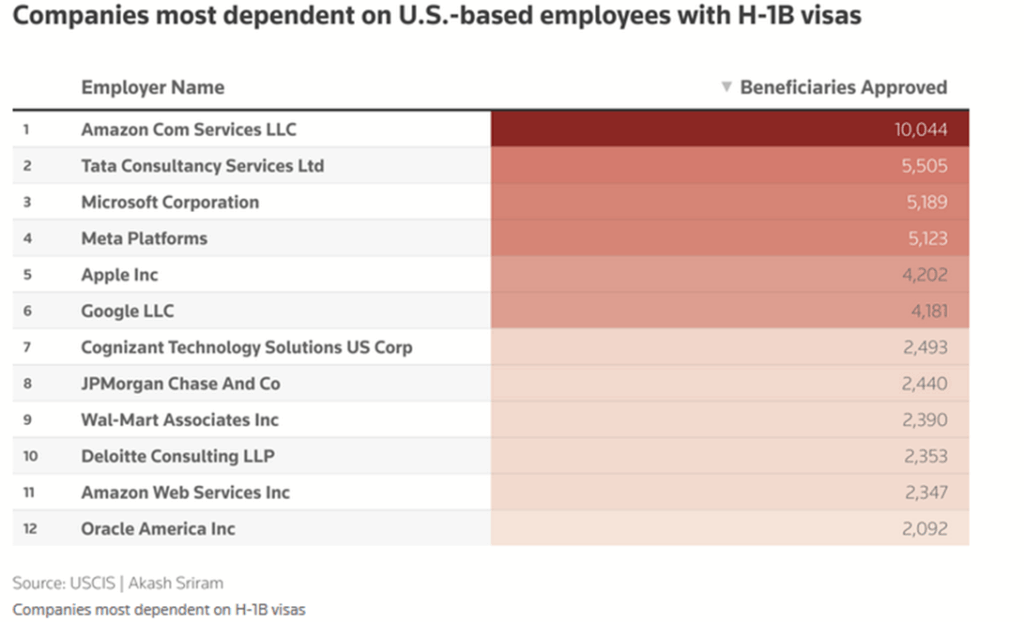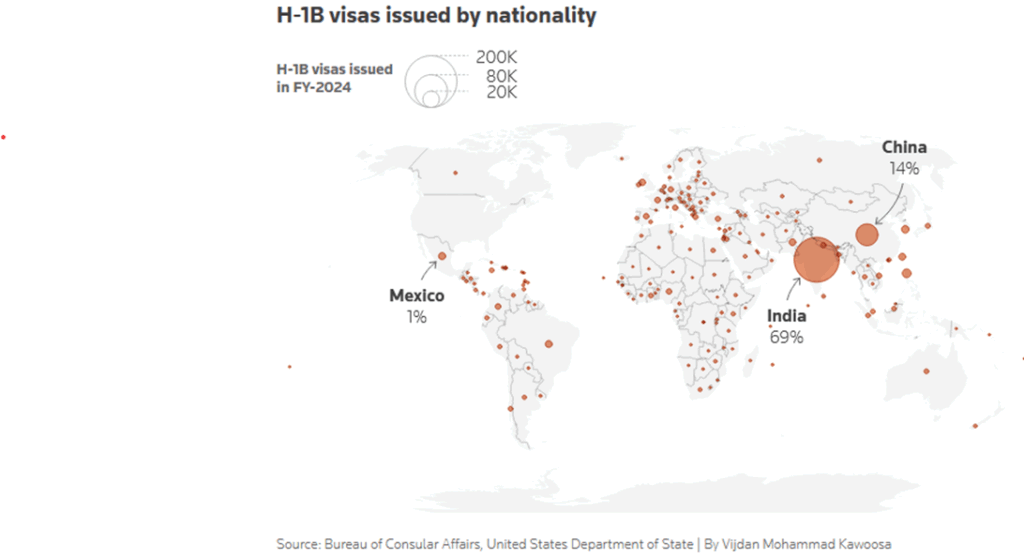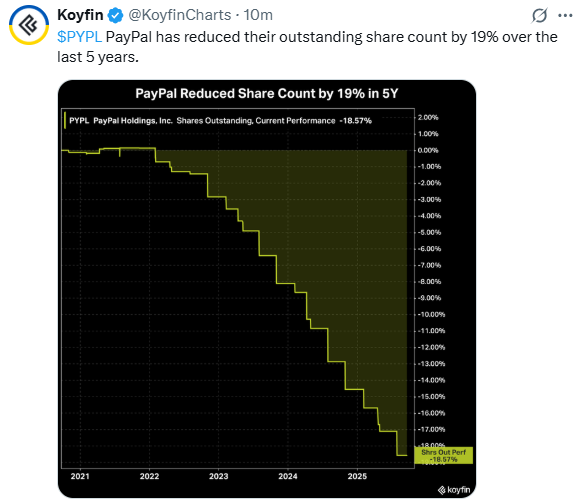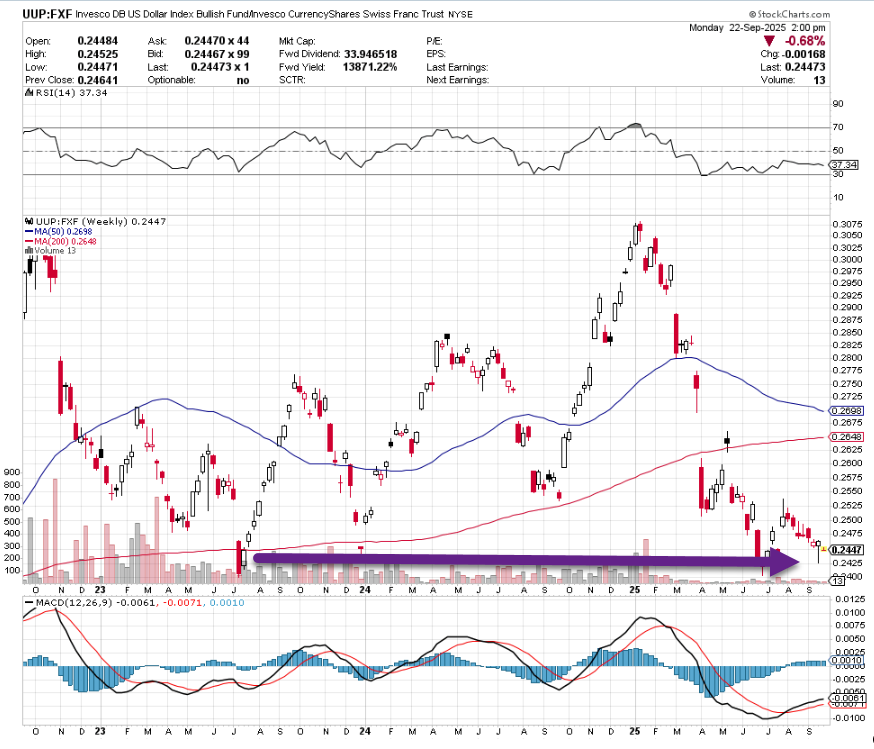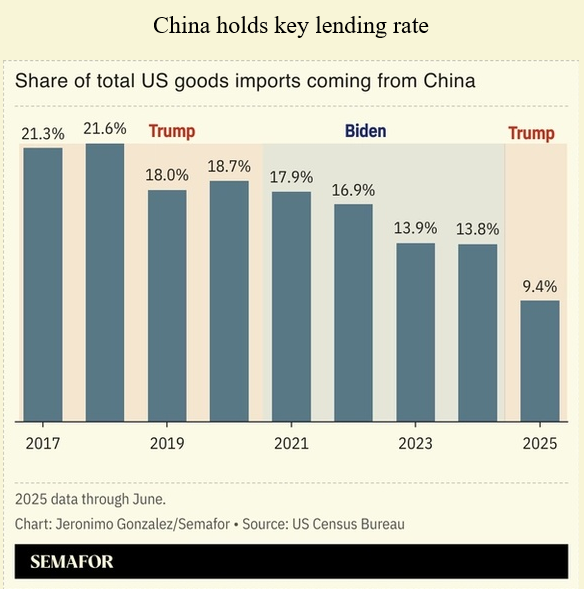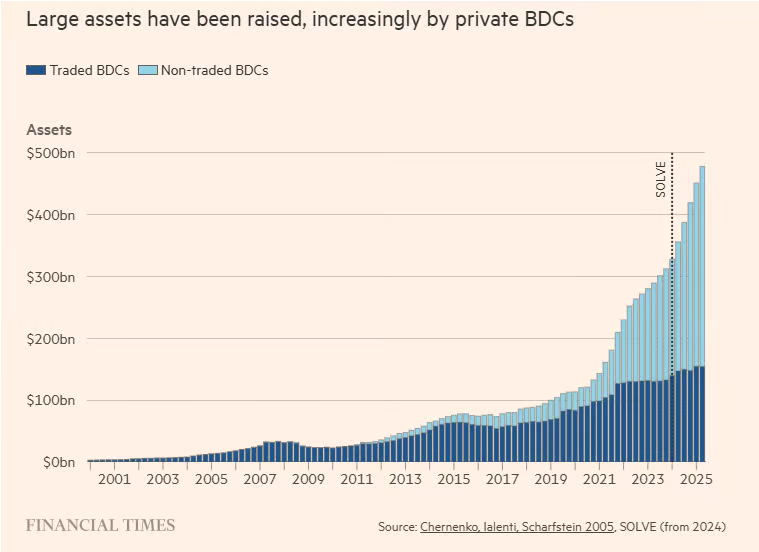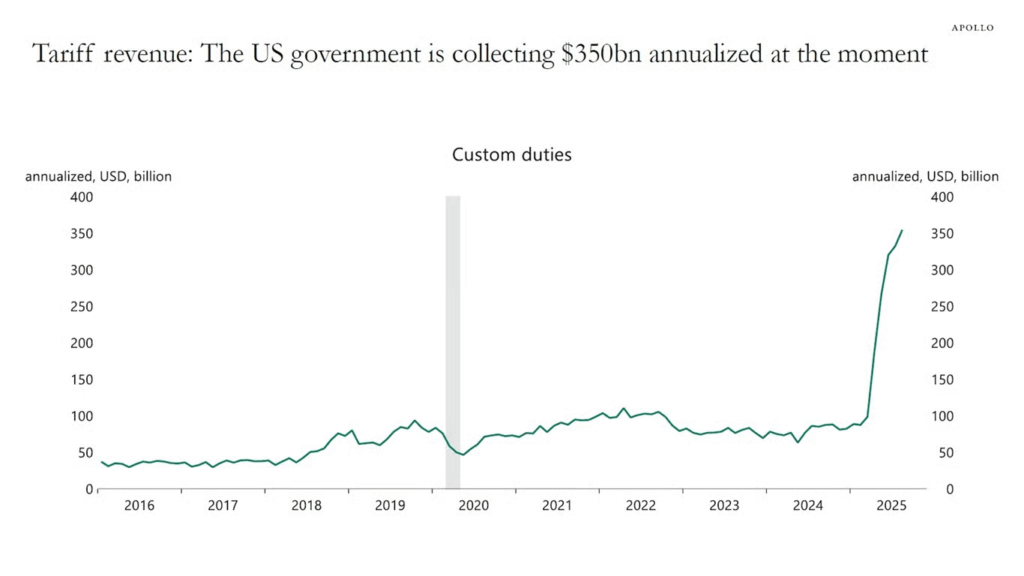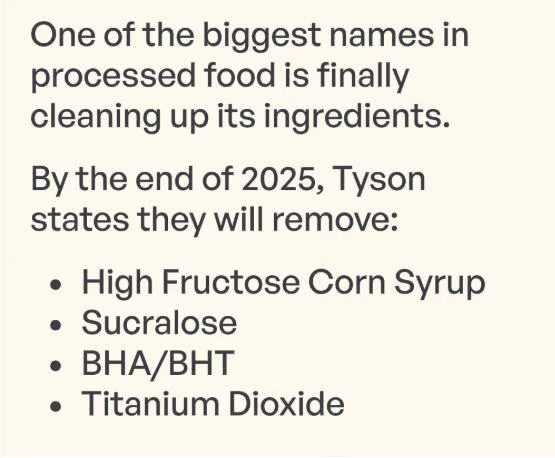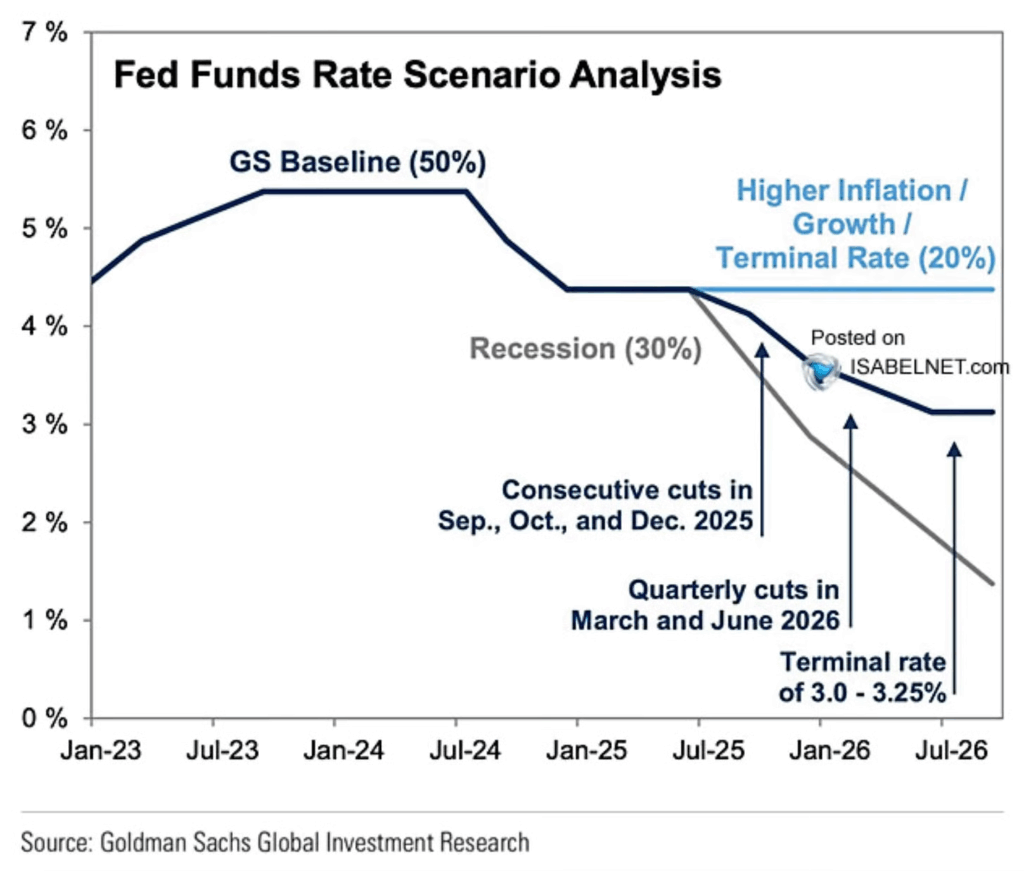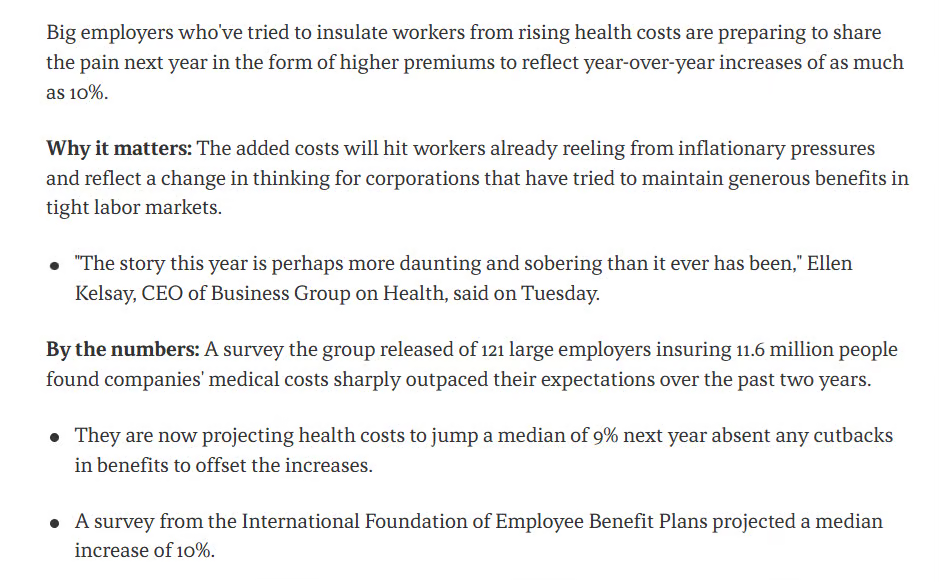1. Why is Market Going Up? Record Profit Margins Before Future AI Cost Savings Even Kick In…
From Irrelevant Investor Blog

The Irrelevant Investor
2. The “S&P 22” Equals 50% Weighting vs. 4% of Stocks in Index
Marketwatch By Christine Idzelis The “S&P 22” group — which equates to a collective 50.3% weighting in the S&P 500, yet makes up just 4% of stocks in the index — includes companies such as retail giant Walmart Inc., he noted
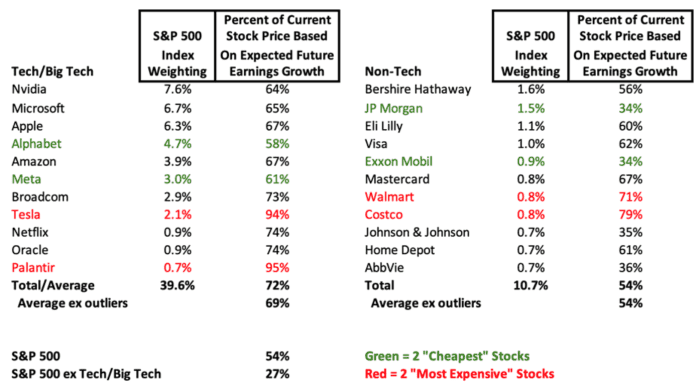
MarketWatch
3. Only 2 Bull Markets Where Cap-Weighted Outperformed Equal-Weigh—Internet Bubble and Today
Bespoke-The only two bulls where the cap-weighted S&P outperformed the equal-weight S&P were the 1990s Dot Com bull and the current “AI Boom” bull. We’ll get to more on this later, but looking at the bear markets that followed these bulls, the equal-weight S&P outperformed the cap-weighted index significantly during the Dot Com Bust bear markets of the early 2000s, and then equal weight underperformed during the Financial Crisis bear and the COVID Crash. During the 2022 bear market that followed the meme-stock and SPAC craze bull market of 2020 and 2021, the equal-weight version of the S&P outperformed slightly.
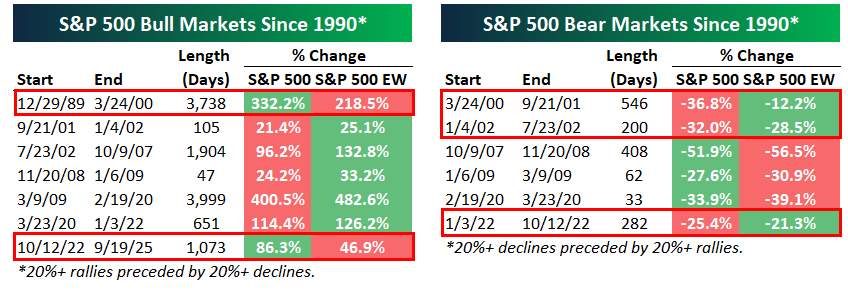
Bespoke
4. U.S. Dollar at 14-year Support Line

DoubleLine Capital
5. EWY South Korea +60% Year to Date….50day thru 200day to Upside on Weekly Chart
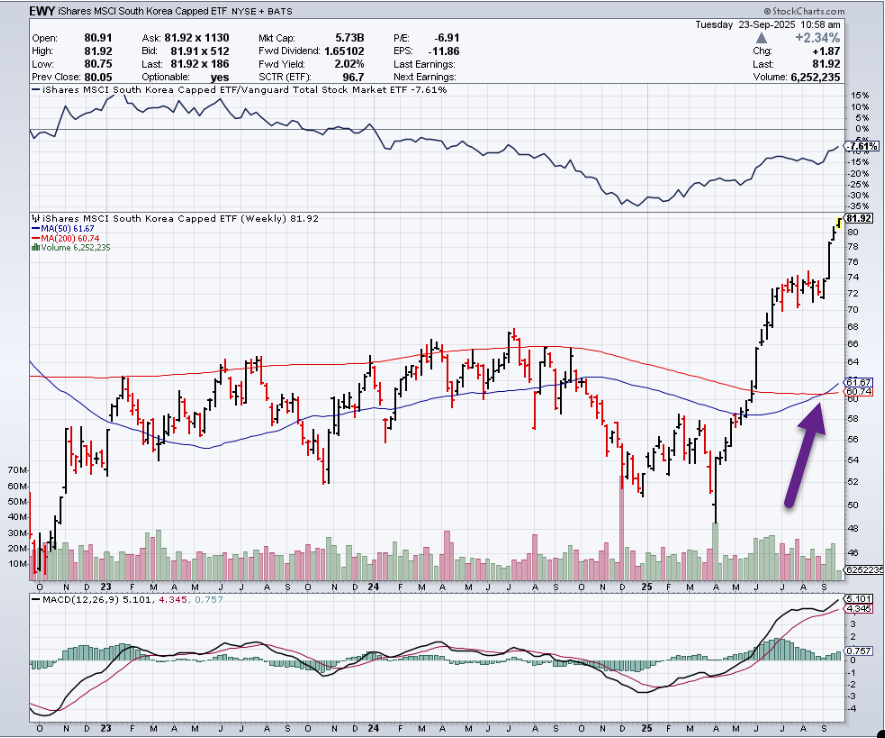
StockCharts
6. Former Popular Retail Trading Name…TTD Trade Desk -67% from Highs ..Back to End of 2023 Levels

StockCharts
7. America Loves Warehouse Stores-CNBC …..COST and WMT Higher P/E Ratios than NVDA

CNBC
8. Leaders of Industrial Robotics

Visual Capitalist
9. Which Jobs Rely on Tips?
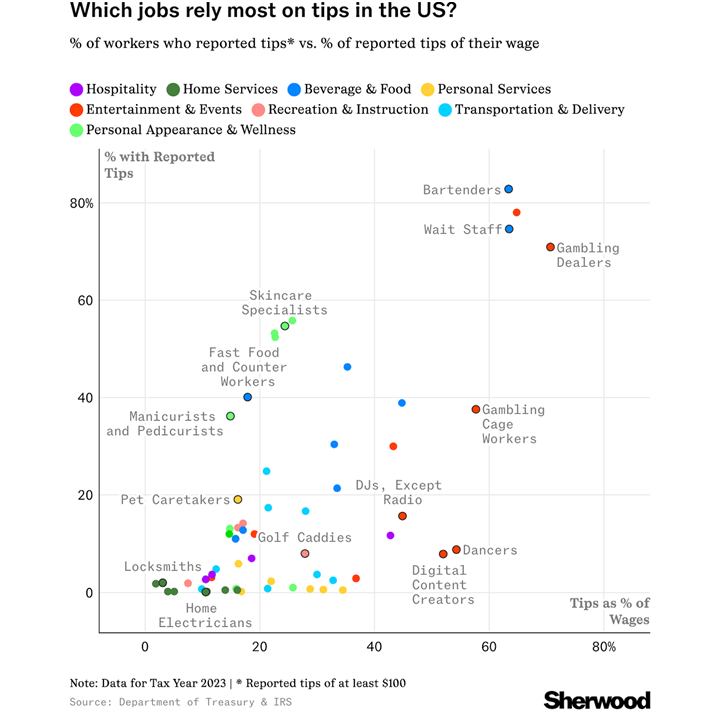
SherwoodNews
10. The Worst Foods for Brain Fog
Mark Hyman, MD Co-Founder & Chief Medical Officer of Function Health
Of all the health complaints I field, brain fog is near the top of the list.
It’s also one I deeply empathize with, as I experienced it after suffering mercury poisoning. When you have it, you can’t think clearly, focus, or remember things.
It’s as if you’re wading through mental quicksand.
In functional medicine, we view this often debilitating symptom as a warning light on the body’s dashboard.
However, similar to a strange pinging or screeching noise in your car, pinpointing the root cause of brain fog can require a bit of detective work.
That’s because brain fog isn’t a disease like heart disease or cancer.
Instead, like a persistent cough, it’s a symptom with many potential causes. Possible culprits include poor sleep, stress, dehydration, and exposure to toxins like mercury, among others.
However…
One of the biggest drivers of brain fog lies in the gut.
Many people are sensitive to one or more foods. When they consume them, these foods disrupt the gut.
The gut disruption then sends ripple effects to the brain, leading to feelings of fogginess and a lack of focus.
Based on my clinical experience with patients, five foods top the list of most common offenders. Are you eating them?
The Gut-Brain Connection
The connection between gut health and brain fog is profound.
Consider Long COVID, the persistent brain fog, fatigue, and other symptoms that some people experience for months after they’ve recovered from the virus.
For people with Long COVID, it can feel as if symptoms manifest in the brain.
However, according to a growing body of research, Llong COVID’s fatigue and fog stem from remnants of the virus in the gut.
As the immune system continually attempts to corral the gut infection, it releases proteins that reduce levels of serotonin, which in turn may trigger fatigue, brain fog, and other symptoms.¹ (Learn more about Long COVID with my Comprehensive Guide to Long COVID Recovery.)
Here are a few additional ways gut health influences brain health:
- Your gut lining acts as a barrier. When this barrier becomes “leaky” (a condition known as intestinal permeability), undigested food particles and other substances can sneak into the bloodstream. Your immune system reacts, triggering widespread inflammation, including in your brain. This inflammation can impair cognitive function, leading to brain fog.
- Your gut is home to trillions of bacteria. Your gut is home to trillions of bacteria—some helpful, some harmful. When the good bacteria dominate, they support digestion, protect your gut lining, and even produce compounds that benefit the brain. But when the harmful ones take over, a condition called dysbiosis, the balance tips in the wrong direction. These “bad” bacteria can release toxins and inflammatory signals that reach the brain, interfering with its function.
- A damaged gut can struggle to absorb key nutrients. B vitamins, magnesium, and other nutrients needed for brain health tend to be most affected. Without these nutrients, your brain can’t produce the energy or neurotransmitters it needs to function optimally, leading to mental fatigue and fog.
The bottom line? If your gut isn’t healthy, your brain won’t be either.
The Worst Foods for Your Gut— and Your Brain
During my many decades as a functional medicine doctor, I’ve seen thousands of patients whose brain fog traced back to gut issues.
The science increasingly supports these connections, though in some cases the research is still emerging.
If I waited for every answer to be proven beyond doubt, I’d miss countless opportunities to help people. Again and again, my clinical experience has shown that the same five common offenders are often at the root of the problem.
- Gluten: For people with celiac disease, eating gluten sets off an immune reaction that damages the gut and drives body-wide inflammation.² That inflammation—along with a leakier gut barrier—can affect other organs, including the brain, and is linked with symptoms like brain fog, headaches, and mood changes.2,3 Some people without celiac disease also report similar symptoms when they eat gluten (often called non-celiac gluten sensitivity), though the “why” is still unsettled.4,5
- Dairy: For people who are sensitive, certain types of dairy can stir up inflammation that may affect the gut as well as the brain.⁶ The main protein in dairy, casein, comes in two forms—A1 and A2. When A1 casein is digested, it can release compounds called casomorphins, which interact with the brain in ways similar to opioids (and, could hypothetically make you feel foggy, sluggish, or even sleepy).⁷ In infants, milk digestion produces higher amounts of casomorphins, and their effects have been studied more extensively.⁸ In adults, the science is less clear, but some research suggests that switching away from A1-containing milk may lead to small improvements in fatigue, mood, or perceived mental clarity.6,9
- Artificial Sweeteners: Some, like saccharin and sucralose, can alter the gut microbiome, especially with frequent or higher intake, which could have downstream effects that impact the brain.¹⁰
- Alcohol: Drinking can disrupt both gut and brain health. Research shows that alcohol can damage the gut lining, increase intestinal permeability, and alter the microbiome—changes that promote inflammation.11,12 In the brain, heavy or frequent use is linked to impaired cognitive function and structural changes, while even moderate intake has been associated in large studies with faster cognitive decline.¹³
- Ultra-Processed Foods: Diets high in ultra-processed foods are linked to shifts in the gut microbiome, reduced microbial diversity, higher intestinal permeability, and low-grade inflammation.¹⁴ These foods tend to be high in refined carbs, additives, and industrial fats, which may worsen gut barrier function and promote dysbiosis. Large population cohorts also show that frequent consumption of ultra-processed foods is associated with faster cognitive decline.¹⁵
These foods aren’t problematic for everyone. We likely all know someone who can down a whole pizza along with several pints of beer and experience zero ill effects.
But for people who experience brain fog regularly, cutting back on one or more of these culprits—depending on the individual—can often make a real difference, bringing back clearer thinking, better memory, and sharper focus.
The research needs to continue to progress in this area, but in the meantime, the positive changes I see with my patients are impossible to ignore.
The DIY Food Sensitivity Test
An elimination diet is the best way to figure out whether gluten, dairy, or any of the other common offenders are a problem for you.
The idea is simple. You temporarily remove one or more food triggers from your diet, give your body time to reset, and then reintroduce those foods one at a time to see how they affect you.
Not sure where to start? My 10-Day Detox can help. In fact, I started using it with my patients for this very reason.
This short-term eating plan eliminates the most common gut-distrupting offenders from your diet. Then, you reintroduce them one at a time to see which ones do (and don’t) lead to problems.
Thousands of people who’ve tried it report clearer thinking, more energy, less bloating, and reduced joint pain. If you’ve been frustrated by lingering symptoms, know this: you’re not alone, and you’re not without options.
An elimination diet may sound hard or inconvenient, but you know what’s really hard? Living day after day with brain fog, fatigue, and other symptoms that never seem to let up.
That’s why I designed the 10-Day Detox—it gives you a clear, step-by-step way to take back control of your health and find relief.
Many are shocked by how much better they feel in just 10 days—maybe you will be, too.


